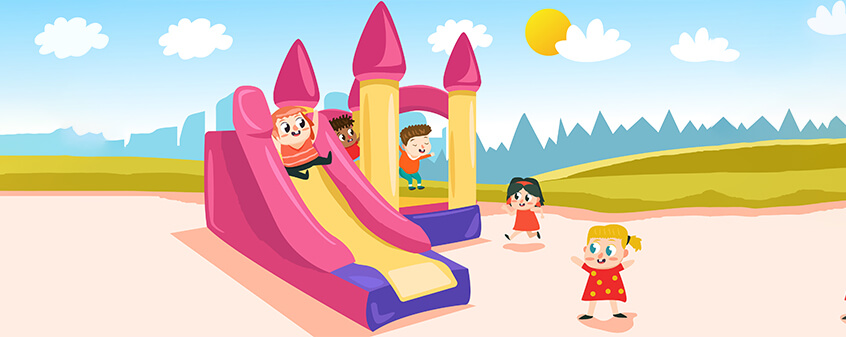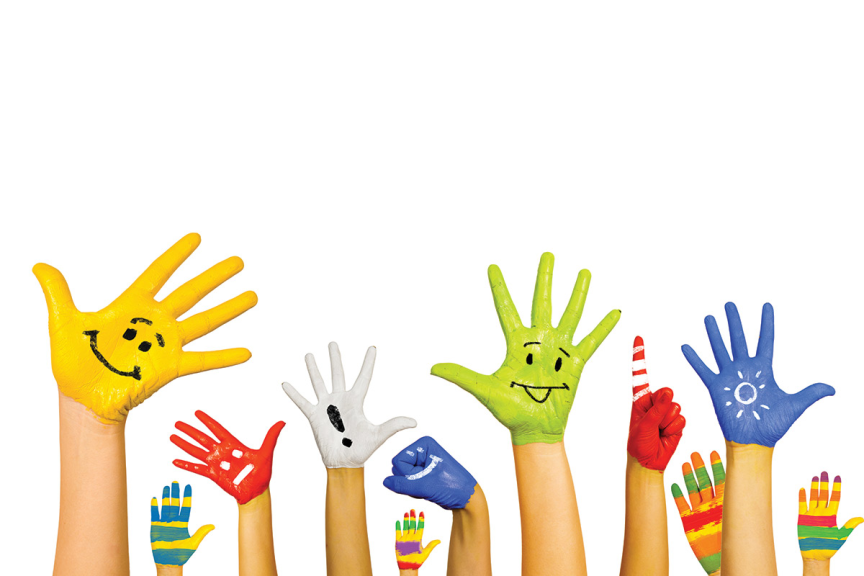Does your child need to be a right brainer?
The 21st century doesn’t demand only right brained or only left brained thinkers but whole brained thinkers who are ambidextrous in creative and rational thinking, having the courage to experiment with knowledge, information, as well as life at hand. I believe that our key responsibility is to oversee that the development of empathy in kids must accompany the development of logic and critical thinking ability. A child is expected to be a good team member and conform to the team’s rules and regulations before expecting others to give him importance or prominence. He needs to be patient and agree to delayed gratification, be empathetic towards others, and understand what makes his friends and colleagues tick. The future global economy is shifting to right brain capabilities that rely heavily upon ideas and creativity to solve the problems that the present day world offers. It is obvious, therefore, that we are shifting to a more abstract era where recognizing, understanding, and shaping concepts, trends, and the interconnectedness of the ‘big picture’ will serve us an important function. The development of such aptitudes relies more on innovative and unconventional education, which is counter to the familiar and rigid environments we commonly associate with learning in the classroom. Strict teachers, over populated classrooms, minimal student–teacher interaction, one-sided teaching approach with the focus on completion of the portion is what happens in a regular classroom. For the development of right brain skill sets, this atmosphere is the least conducive. A career as a software engineer, finance analyst, and solicitor is still looked up to by Indian youth and their parents. As Indians are good at these left brain jobs and are cheaper to hire, these jobs are mostly outsourced to India from US, Japan, UK, Germany, and others. Pink observes this massive exodus of outsourcing of L-directed or left-brained white collar jobs to India in these lines: ‘The programmers I met in Mumbai are but four well educated drops in a global tsunami. Each year, India’s colleges and universities produce about 350,000 engineering graduates.
That’s one reason that more than half of the Fortune 500 companies now outsource software work to India. For instance, about 48 percent of GE’s software is developed in India. The company employs a whopping 20,000 people there. Hewlett- Packard employs several thousand software engineers in India. Siemens employs three thousand computer programmers in India and is moving another 15,000 such jobs overseas. And the list goes on. As the chief executive of GE India told London’s Financial Times: “Any job that is English-based in markets such as the US, the UK, and Australia can be done in India. The only limit is your imagination.’ The fact is if mathematical, analytical, and mechanical
skill-sets are primarily left brain skills and job prospects related to it are as bleak as above, then it makes sense to examine the increasing importance of right brain skills now in the current time. Thomas L. Friedman in The World is Flat (2005) observes why in the present time and space we must
encourage our children to supplement high-tech abilities with aptitudes to see the ‘big’ picture, to detect patterns and opportunities, to craft a satisfying narrative, to understand the subtleties in human interaction, and fi nd joy in oneself as well as elicit the same in others, and to stretch beyond the everyday commonplace pursuit of purpose and meaning to create a work of beauty so as to come up with inventions the world didn’t know it was missing. For me the ‘big picture’ not only involves what the commercial or financial world makes of it in terms of globalization or transcending regional and national barriers.
The big picture is about the picture of life at large. It involves empowering our kids to set goals for themselves and help them follow a purpose in their life. It involves making children aware of the positive thought they are capable of; how their positive thought will help them do good not for themselves but for all around them and how the focus of life should be joy from within and not just without. It makes sense for present day Indian parents to nurture the right brain skills their children as the most urgent need of the day. Can we not make our children and youth aware of this fact?
Prahlad says that at his organization he finds it easier to hire the ‘second class or pass class’ students. This set of students he feels are the smartest. They are the ones who have discovered the shortest path to crack the boards. They know that they have to get a measly 35 percent to pass. They spend just that much time on studying. They realize that then they have enough time to do other things, making them more multi-faceted than the toppers. They have a hunger in them to prove things to the world that rejected them for so long.
He says hiring toppers doesn’t give him any benefit. He has to get them to unlearn what they have learnt and relearn what he needs from them. So how do we then bring up children who are self aware and intelligent? Here are a few tools that are bound to help you in your journey:
1. The power of reading
Every period in history is defined by the tools invented in it and the way in which they were used. The definitions of the learner and the process of learning have changed. Education is no longer bound by the textbook, teacher or reference books in the library. The world of the student is open to the Internet.
It is limited only by the child’s ability and proficiency to read and learn. The ability to read easily and proficiently is thus a skill all teachers and parents have to ensure children develop. It is only this skill which will ease children into self learning. Theories and methodologies regarding how to develop reading skills keep changing among educationists but there is unanimous agreement that practice is of prime importance to any reading programme. Differentiated reading strategies are important as different children have different learning styles. Sight reading involves learning of new words as a whole and imprinting on the long term memory of the image of the word. If the child can see the picture of a ball and say it’s a ball, show him the word ball five times and the sixth time he will read it as ball. Most kids can read McDonalds and Coca Cola way before they actually ‘read’. This process develops the visual recognition of the reader so that he can become fluent with reading. Sight reading is a much more effective way of reading. Children who become proficient at it become speed readers. They also are more effective in ‘reading for meaning’ as their brain is not as burdened by decoding of the word in the brain and then attaching meaning to it. A good way to put this into action is to label most things in the house. TABLE. CHAIR. WINDOW. Have cards for the family that your child places on the dinner table. MUMMY. PAPA. DADI, PRERNA. PRATHAM.
Selecting appropriate books and making the stories exciting is of prime importance to stimulate reading habits. Therefore, choose a story you like to hear and then read it aloud a few times with good voice modulation to your child. You could whisper, scream, boo, and pause in appropriate places. Using your voice to complement the text and illustrations will bring the story to life. My favourite novel is The Alchemist by Paulo Coelho. This book confirms my belief that there are no coincidences, only an universal design. The book is a masterpiece in symbolism. It tells the story of a boy who is in search of happiness, fulfilment, and the ultimate purpose of creation, and starts out on a journey to find it. Along the way, he learns to question these values and thoughts. At the story’s end he discovers that the values he has been searching for, for so many years, lie in the journey itself. The story is a positive one with the message that you can get anything as long as you want it with all your heart. One of the important ways we perceive our environment and our existence is by anticipating and telling ourselves stories. Making stories and adapting them to suit our environment and context is a strategy for making our world experiences and desires intelligible—a fundamental way of organizing or reorganizing relevant information.
The information we receive through stories then educates and influences our views and perceptions even if we try hard to avoid it. The fact is they are all part of our lives. Like metaphors, they seem to be everywhere. From fairytales and text book stories to the modern day novel, they always remain a part of our lives. Stories have been an integral part of human society. I attribute my positive spirit to the story of Pollyanna, a book I read as I underwent numerous leg operations. The reason why stories are so powerful is that they engage the emotional centre of our brain. Most people can recall where they were when Indira Gandhi was assassinated or when Princess Diana died in the car crash. Most people will also be able to vividly recall their fi rst kiss. These are the same people who may not remember what they ate for dinner two nights ago. We will remember parts of stories that resonate deeply within us. Using a story as a spring board to learn is a great idea. Other than the conventional ideas of discussing characters and events, what parents and teachers can focus on are other aspects of learning derived from book reading. If a book is based on dreams, like Peter’s Dream is, discuss the idea of dreams with the child: What is your dream in life? How do you think you are going to achieve it? What aspects of the story did you like the most? Have you at anytime felt disappointed like Peter did? How did you react then? Do you think you would react differently now that you have read the book?
Summary
5 to 6 years of age
Peter’s Dream by Dr James Hoffman
The book is based on the dreams of a little boy who escapes into a world where there are no restrictions on what he has to wear, eat, who his friends are or what routine he has to follow.
Very Hungry Caterpillar by Eric Carle
With lots of holes for tiny fingers to explore, this interactive book teaches children about numbers, days of the week and time.
Recommended Reading
Cat in the Hat by Dr Seuss
By combining the funniest stories, craziest creatures and zaniest pictures with his unique blend of rhyme, rhythm and repetition, Dr Seuss helps children of all ages and abilities learn to read.
Best Pet by Penny Matthews
Tom wants a pet he can play with. Monty the ferret is perfect. He’s smart, he can run fast, and he loves playing
hide-and-seek!
6 to 7
Just Mabel by Frieda Wishinsky
Just Mabel beautifully narrates the story of a young girl who is not happy with her name.
The Owl who was Afraid of the Dark by Jill Tomlinson
This book provides the opportunity for emotional development in children.
Judy Moody: Around the world in 8 ½ Days by Megan Mcdonald
Busy with her ‘Around the class project’, Judy learns about Italy with her best friends. Enter a new girl who
is exactly like Judy and they form an immediate bond.
Charlottes’ Web by E.B.White
This is a tale of how a little girl named Fern, with the help of a friendly spider
Charlotte, saves her pig Wilbur from the usual fate of nice fat little pigs.
7 to 8
Charlie and the Chocolate Factory by Roald Dahl
Charlie Bucket can’t believe his luck when he finds a golden ticket and wins the trip of a lifetime around the
famous chocolate factory.
Recommended Reading
James and the Giant Peach by Roald Dahl
Jame’s aunts, Spiker and Sponge, beat him and starve him and make his life a misery. But one day he meets a
mysterious man who gives him a bag of magic crocodile tongues and so begins the adventure of his dreams.
Gulliver’s Travels by Jonathan Swift
Gulliver gets washed up in Lilliput – a world filled with tiny people. Here begins the adventurous journey of
Gulliver wherein from the world of tiny people he reaches the world of the giants. Though tumultuous it is
a journey of great learning, discovery and victory.
8 to 9
Matilda by Roald Dahl
Matilda’s parents have called her some terrible things. The truth is, she’s a genius and they’re the stupid ones. She gets the better of them and her spiteful headmistress, Miss Trunchbull, as well as discovering that she has a very special power.
Harry Potter series by J.K.Rowling
Harry Potter thinks he is an ordinary boy – until he is rescued by a beetle eyed giant of a man, enrolls at Hogwarts School of Witchcraft and Wizardry, learns to play Quidditch and does battle in a deadly duel. The
Reason: Harry Potter is a Wizard!
Recommended Reading
9 to 10
The Eighteenth Emergency by Betsy Byars
Mouse is understandably terrified when Marv Hammerman, the most feared boy in school, says he is out to
get him. Mouse and his resourceful friend, Ezzie, are already armed with plans to tackle several horrendous
happenings. The book deals with how kids survive classrooms and bullies.
The Wonderful Wizard Of Oz by L. Frank Baum
When a cyclone hits Kansas, Dorothy and her little dog, Toto, are whisked away to the magical land of
Oz. All alone in this strange world, they wonder how they’ll ever get home.
10 to 11
The Phantom Tollbooth by Norton Juster
This book is all about appreciating the world around us. Through the example of Milo, a boy who is bored
easily and can fi nd nothing fruitful to do with his time, the author Norton Juster takes us through a book which is full of praise of the importance of education and the realization of self.
Journey To The River Sea by Eva Ibbotson
Maia, an orphan, can’t wait to start the long sea voyage where she is to begin a new life with relatives she has never met, a thousand miles up the Amazon river.
Ages Book and
Tuck Everlasting By Natalie Babbit
Winnie Foster has everything a young woman could desire. But Winnie longs for freedom, for adventure. She escapes one morning to explore the woods surrounding her home, and encounters the Tucks, a close-knit family with a mysterious past that begs the question: If you could live forever, would you?
Contrary to popular belief, love of reading doesn’t come naturally to children. Orville Prescott, principal daily book critic for New York Times, once said, ‘Few children love books by themselves. Someone has to lure them to it. That someone is you.’
2. Encouragement
I remember my 3-year-old niece Anokhi once telling me as she cried into her bowl of corflakes, ‘Lina for, my brain just told me that I am stupid.’ A child’s inner monologue does not just happen; it is born out of what they hear from other people. Children absorb words, feelings, actions, and beliefs from you and others and they internalize them. When kids hear good words, words of praise, and encouragement, they learn to respect themselves. They learn to praise the efforts of others too. If you criticize them over and over again, they feel ashamed of themselves.
Kids will not be able to say anything positive about themselves unless they hear from us first. Tell them to be mindful of the words they use, their actions, how they behave, and how they expect others to behave. Tell them you love them and are pleased with their good deeds. This will reinforce good behaviour and develop values. Talking about having the right attitude and being positive is easier said than done. Research shows that we have almost 50,000 to 60,000 thoughts a day with over 90 percent being the same as the day before and almost 77 percent being negative.
‘Most people keep thinking the same thoughts and visualize the same images in an unconscious, automatic manner. This means they keep viewing the same movie in their mind, and consequently, go on living the same kind of life.’1 You can change the thoughts and images in your mind by changing the story in your mind. It’s not an easy job to keep your child motivated to think positively. But it is an essential part of parenting. Children have voices in their heads that tell them so many different and contrasting things. As parents, you should be able to teach them to look out for what messages their mind is sending them and how they can control it. One way to explain this to children is for them to view their mind as a garden. Each thought is a seed. This seed can be a weed seed or a beautiful flower seed.
Doing so encourages children to be mindful of their thoughts. Another tip is to avoid the news till children are old enough to process the news. Everything we watch on television or read in the newspapers is specifically designed to stir up our emotions and put us in a state of irrationality and confusion. Even I as an adult only scan the newspaper for essential news and that too at the end of the day so my day’s energy does not begin on a negative note.
Children also need a lot of encouragement to do their homework. Parents need to avoid falling into the trap of helping children with their homework for the sake of completing it. Then the homework becomes meaningless. Also, I always tell parents that the more you worry about homework, the less they will worry about it.
3. Positive thought
Mary Morrissey, an inspirational speaker, says, ‘Doubts are like little worms that kind of worm their way in our minds.’ We will either entertain our doubts and fears until they become the predominant force in our lives, or we send them away. We can make a choice to deny our doubts and instead turn our attention to our faith.
If we tell them that the world is full of ghosts and scary spirits they will develop an irrational fear of them. Instead, teaching them to be wary of strangers, not accepting rides or sweets from them or not accepting sweets from is prudent. Get your children to say these over and over to themselves.
4. Taking their own decisions
Encourage kids to make small choices and decisions. These could be as simple as what clothes to wear or what shoes to buy. Motivate kids into doing the right thing by critiquing the action, not the child. Statements like ‘you are a lovely child, you work so well, you have done a good job,’ etc., help the child affirm the positive in him.
5. Teach your child to learn music
Music has a tremendous impact on memory and learning. It has been proven that children who study while Mozart is being played in the background have a higher activation of both the right and left brain. The information activates the left brain while the music activates the right brain.
Researchers at the University of Montreal used various brain imaging techniques to investigate brain activity during musical tasks and found that sight-reading musical scores, and playing music, both activate regions in all four of the cortex’s lobes, and parts of the cerebellum are also activated during these tasks. Sergent, J., Zuck, E., Tenial, S., and MacDonall, B. (1992). ‘Distributed neural network underlying musical sight reading and keyboard performance’.1 Kids may play music or sing just for themselves. They may be out of tune or not conform to the standard norms of music. But as parents we need to encourage them to explore it. ‘Studying music encourages self-discipline and diligence, traits that carry over into intellectual pursuits and that lead to effective study and work habits. An association of music and math has, in fact, long been noted. Creating and performing music promotes self-expression and provides self-gratification while giving pleasure to others. In medicine, increasing published reports demonstrate that music has a healing effect on patients. For all these reasons, it deserves strong support in our educational system, along with the other arts, the sciences, and athletics.’ Michael E. DeBakey, leading heart surgeon, Baylor College of Music.
In 1982, researchers from the University of North Texas performed a three-way test on postgraduate students to see if music could help in memorizing vocabulary words. The students were divided into three groups. Each group was given three tests—a pre-test, a post-test, and a test a week after the fi rst two tests. All of the tests were identical. Group 1 was read the words with Handel’s ‘Water Music’ in the background. They were also asked to imagine the words. Group 2 was read the same words also with Handel’s ‘Water Music’ in the background. Group 2 was not asked to imagine the words. Group 3 was asked to read the words only without any background music, and was also not asked to imagine the words. The results from the first two tests showed that Group 1 and 2 had much better scores than Group 3. The results from the third test, a week later, showed that Group 1 performed much better than Group 2 or 3. Introduce your child to various styles of music. Let your likes and dislikes of the various styles of music not limit you. Slowly he may just choose what suits him and his personality. Remember that anything forced will usually create resistance.
6. All round development
A polymath is a person of great and varied learning. His sphere of interaction has to transcend disciplines and have them culminate through interdisciplinary approaches to life. A polymath is someone who refuses to conform and will be difficult to tie down to one discipline or thought process. We need children who can break the mould and fl y out to create a world for themselves.
Leonardo da Vinci was an artist, scientist, and inventor and each of his talents nourished the other in his work of art. Rabindranath Tagore, an artist, painter, composer, author, and singer is a rather polymath. Nathan Myhrvold, the co-founder of Intellectual Ventures, who earlier worked as the chief technological officer at Microsoft, is a prize winning nature and wildlife photographer. He also is a master French chef and is working on how to tackle global warming. In this highly competitive job market such lateral thinking abilities are valued. If the child needs to branch out to explore his other abilities and possess the mental agility to synthesize, to contribute new ideas, he needs to be given this option as a child. Expecting him to do so after he has grown into a conditioned adult will be asking too much of him. We need to ensure kids do not settle into a system of complacency that doesn’t challenge their innate abilities. New ideas and breakthroughs will evolve only from free and horizontal cross thinking.
In order to initiate the process, let them participate in different activities that the school and community offer. They will find their passion eventually. Our responsibility is to encourage them to manage their time pragmatically and participate in different avenues. Open various avenues to them. Let them paint, dance, sing, play an instrument initially. Introduce one thing at a time. If they like something they will either want to do it or will let go. Do not make the task stressful.
7. Develop the skill of observation
Looking at life from other perspectives always offers opportunities to develop creative skills. The protagonist of Andy Andrews, best selling novella Noticer teaches a person to notice the small things of life, which enables them to make major shifts in their thinking process. Introduce the ‘noticer project’ to your kids. Play memory games with them. Keep many unreacted objects on a tray and give them a minute to observe. Remove the tray after the minute and them to inevite down everything they’ve fun. Let us augment this creative alertness in our children. It’s time to break the mould of the notoriously introverted, uncreative, humourless Indian.
Surprise your Brain
I had an exercise expert tell me to start living life lefthanded (since I’m right-handed) as much as possible. I was sceptical, but I’ve noticed that since I’ve been pulling luggage, lifting objects, and performing other everyday tasks with my left hand, my brain seems more receptive to learning other new skills as well.
For your child: In India, we have very severe cultural associations with the use of the left hand, for many it’s considered impure. Break the mould. The use of the left hand activates the right part of the brain. Ask them to do the same thing to brush their teeth with the other hand, pick up their bags with their other hand. Simple tasks like that help the brain have cross references.
Embrace the unfamiliar: Don’t listen to your favourite music for a while; try some totally different tunes. If you always read the sports page first, go for the business section instead. Since I have begun reading, varied material, I have noticed that my mind is ready to challenge itself to read and listen to different stuff .
For your child: Introduce him to a new art form. Get him a variety of books to read. Introduce him to a sport he
may have thought he could play.
Change your schedule: Do not repeat the same schedule day after day. Once you break your physical schedule for the day, it just becomes easier to break your mental stagnation.
For your child: Children may need timetables at times but we can bring variety even in that. Have a different thing for breakfast. Experiment with cuisines for lunch or dinner. Rearrange furniture in their rooms. Reorganize wardrobes.








